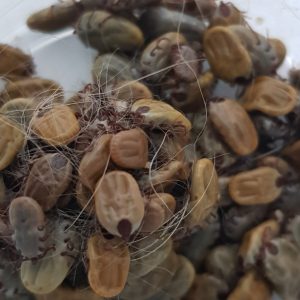João Eduardo Nicaretta , Rubens Dias de Melo Junior , Raphaela Barbosa Naves , Igor Maciel Lopes de Morais , Vanessa Ferreira Salvador , Luccas Lourenzzo Lima Lins Leal , Ana Lucia Coutinho Teixeira , Lorena Lopes Ferreira , Guilherme Marcondes Klafke , Caio Marcio de Oliveira Monteiro , Fernando de Almeida Borges , Livio Martins Costa Junior , Daniel Sobreira Rodrigues , Welber Daniel Zanetti Lopes
Abstract
This study compared selective control versus strategic control against Rhipicephalus (Boophilus) microplus, under conditions of a real dairy farm. Strategic control requires that all animals be treated with acaricide at regular pre-determined intervals. Selective control only requires treatment of infested animals and only when they are at or above a pre-determined threshold. Tick counts on animals and in pasture were performed and the susceptibility of tick populations to the different treatment methods was evaluated at the beginning and end of the study using the Larval Packet Test, Larval Immersion Test, and Adult Immersion Test. Over the four years of the study strategic control was more advantageous than the selective control as the group experienced lower tick burden on animals and in pasture, absence of skin lesions and myiases, lower operating costs, treatments concentrated in fewer months of the year and lower resistance pressure.






Comments are closed